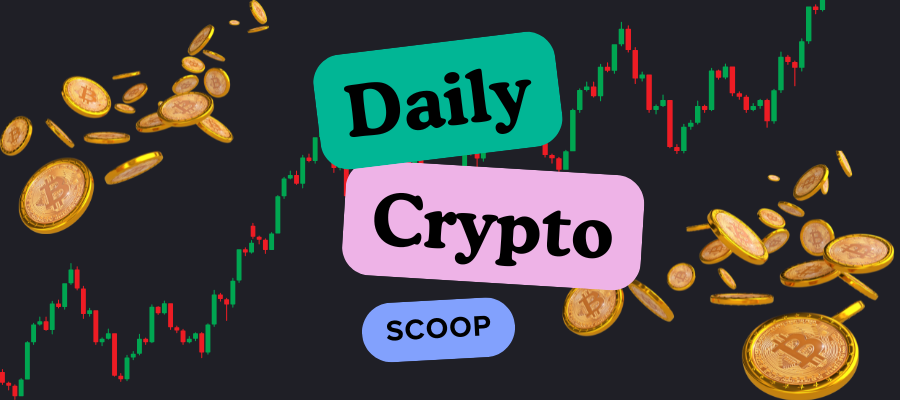On-chain governance takes place directly on the Blockchain and is transparent, while off-chain governance takes place outside the blockchain and is more flexible.
The most important things summarized:
💡 On-chain governance offers transparency and automation, but carries risks such as concentration of power. Off-chain governance allows for detailed discussions, but can be opaque.
💡 Tezos and Decred use on-chain governance, while Bitcoin and Ethereum rely on off-chain governance to control protocol changes.
💡 The decision between on-chain and off-chain governance depends on the goals, user base and technical requirements of a blockchain project.
In this article you will learn what on-chain and off-chain governance are, how they differ, what advantages and disadvantages they have and in which projects they are used.
Definition and differences
There are two main approaches to decision making in blockchain technology: on-chain governance and off-chain governance.
What is on-chain governance?
On-chain governance is a system in which decisions are made and implemented directly on the blockchain. Changes to the protocol, such as software upgrades or rule adjustments, are decided by votes of token holders. These votes are transparent and immutable because they are stored on the blockchain.
What is Off-Chain Governance?
Off-chain governance refers to decision-making processes that take place outside of the blockchain. Developers, miners, users and other interest groups discuss changes in forums, social media or meetings. Decisions are made through consensus or informal voting and then implemented into the blockchain. This approach offers flexibility but can be less transparent.
advantages and disadvantages
Both on-chain and off-chain governance have specific advantages and disadvantages that should be considered when designing blockchain networks.
Advantages and disadvantages of on-chain governance
Advantages:
- Transparency: All decisions are recorded directly on the blockchain and can be viewed by everyone.
- Direct participation: Token holders can participate in voting immediately, promoting decentralization.
- Automated implementation: Decisions are made Smart contracts executed automatically, reducing human errors.
Disadvantages:
- Concentration of power: Large token holders can exert disproportionate influence, which can lead to a plutocracy.
- Low flexibility: Once decisions are made, they are difficult to reverse, making adjustments difficult.
- Technical complexity: Implementation requires advanced technical knowledge and may be error prone.
Advantages and disadvantages of off-chain governance
Advantages:
- Flexibility: Decisions can be made informally and quickly, without immediate technical implementation.
- Wider participation: Even people without technical expertise can participate in discussions.
- Detailed Discussions: Complex issues can be discussed in detail before a decision is made.
Disadvantages:
- Trust dependency: There is a greater need for trust in the people and institutions involved.
- Lack of transparency: Decision-making processes are often less understandable and can be non-transparent.
- Centralization risks: Influential actors can dominate the process, which contradicts decentralization.
Areas of application
On-chain and off-chain governance are used in different blockchain projects depending on the specific requirements and goals of each network.
Examples of on-chain governance
- Tezos: Tezos is a well-known example of a network with on-chain governance. Here, token holders can vote directly on software updates and even submit suggestions for changes.
- Decred: Decred uses a hybrid consensus system that enables on-chain governance. Stakeholders can vote on changes to the protocol, encouraging continuous development of the network.
Examples of off-chain governance
- Ethereum: Similar to Bitcoin betting Ethereum on off-chain governance. Changes are proposed through Ethereum Improvement Proposals (EIPs) and discussed in the community before being implemented.
- Bitcoin: Bitcoin uses an off-chain governance model where decisions are made through informal discussions in forums, social media and developer meetings. Suggestions for protocol changes, so-called Bitcoin Improvement Proposals (BIPs)are discussed outside the blockchain and implemented upon consensus.
Frequently asked questions (FAQ) about off-chain vs. on-chain governance
In this section we answer the most common and important questions about off-chain vs. on-chain governance.
Yes, some networks combine on-chain and off-chain governance to take advantage of the benefits of both models. For example, discussions and suggestions can occur off-chain, while voting and implementation occur on-chain.
On-chain governance promotes decentralization as all token holders can vote directly. However, off-chain governance can also be decentralized when decisions are made through broad community participation.
Transparency in off-chain governance depends on the platforms used. Open forums, minutes and public discussions can promote transparency, but this is not always guaranteed.

